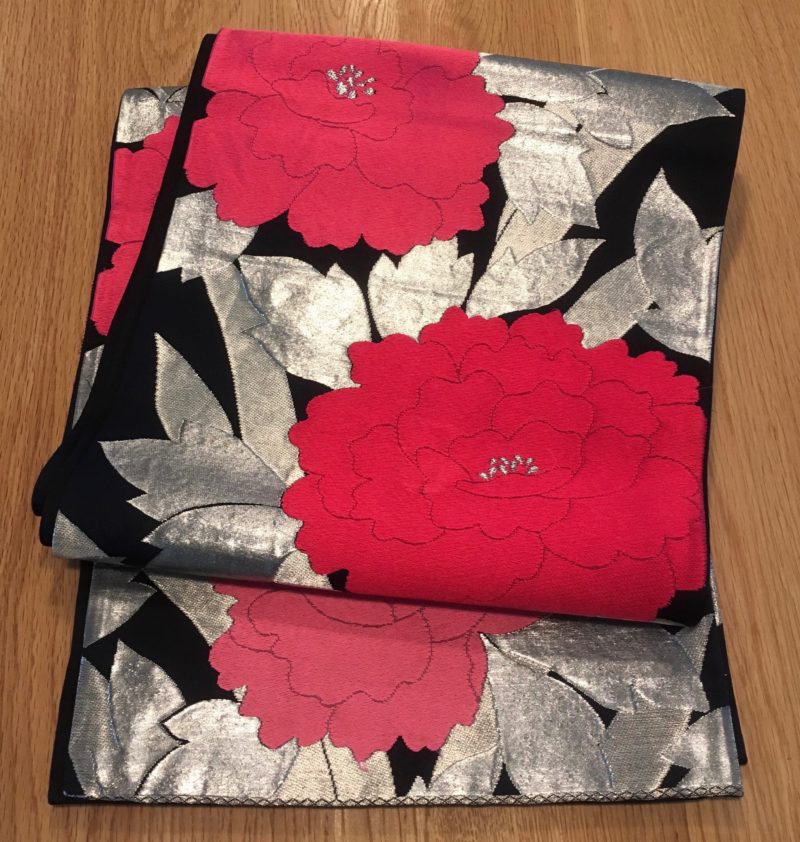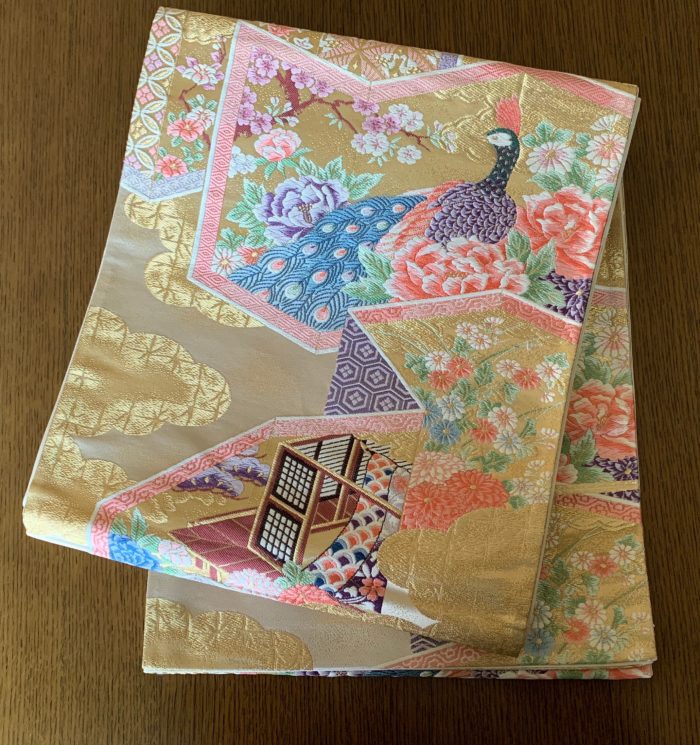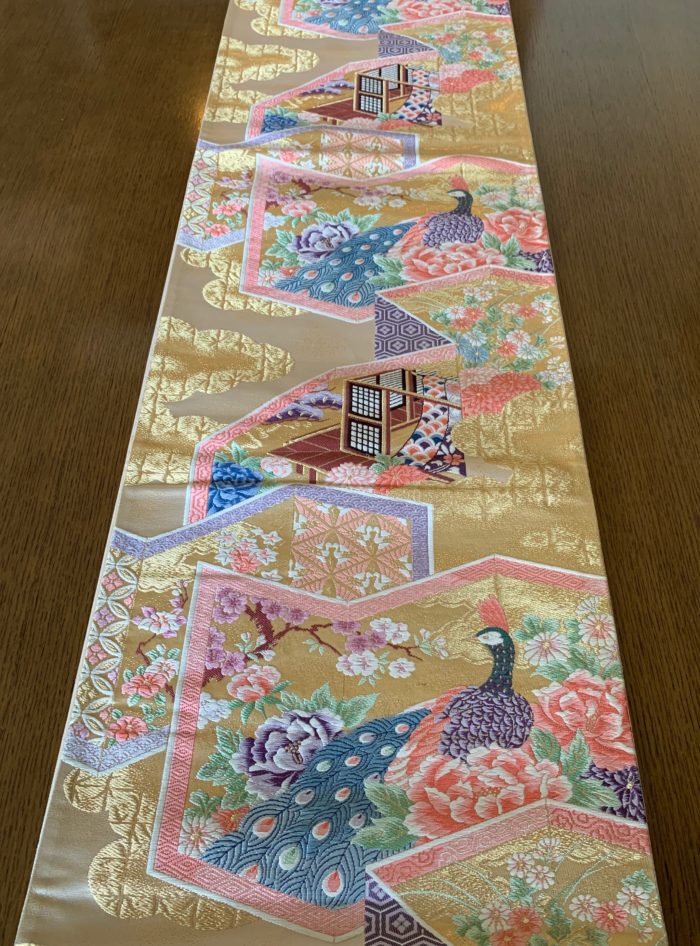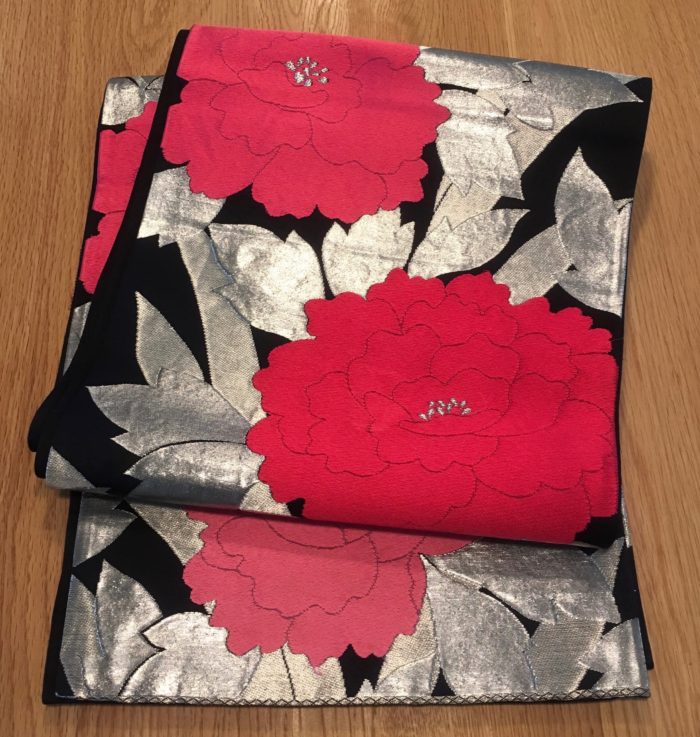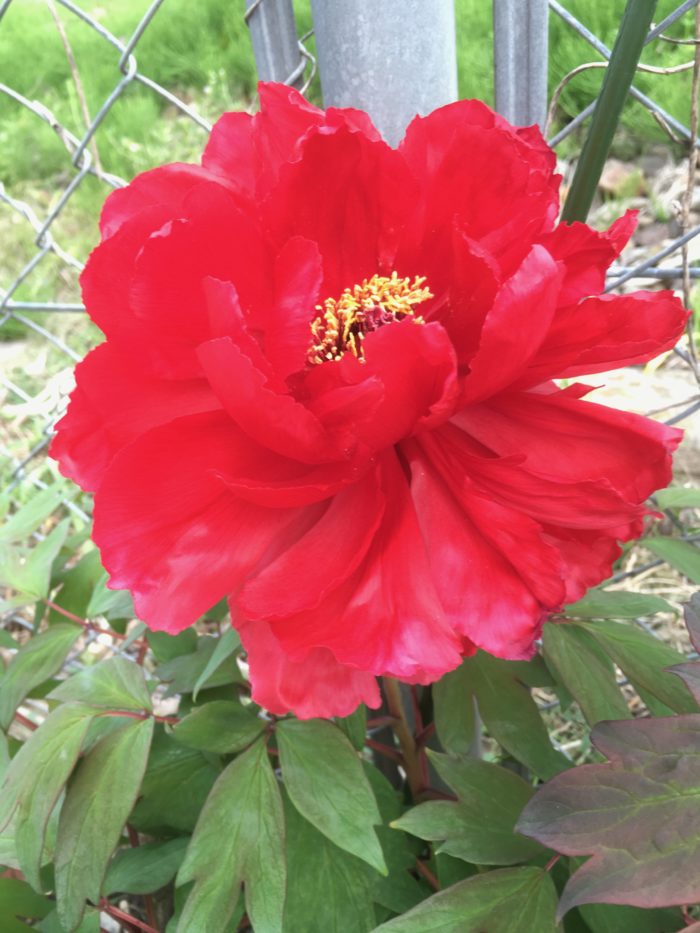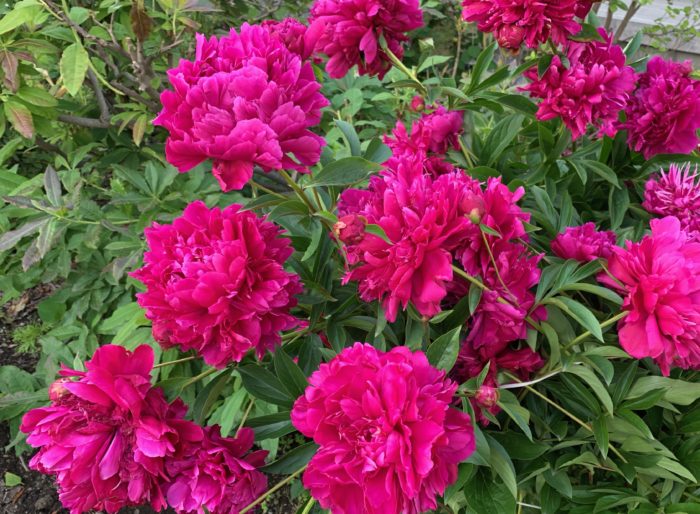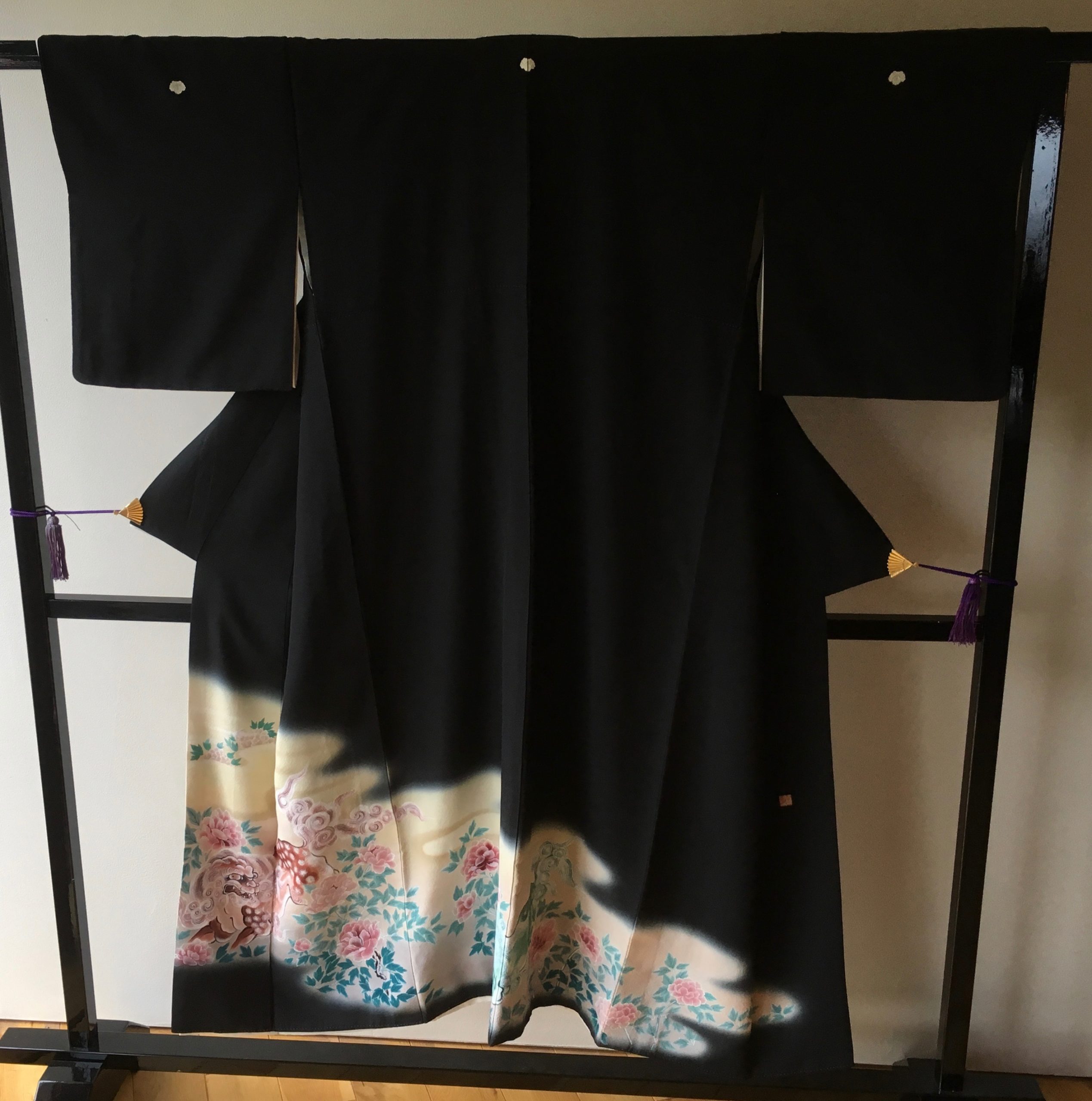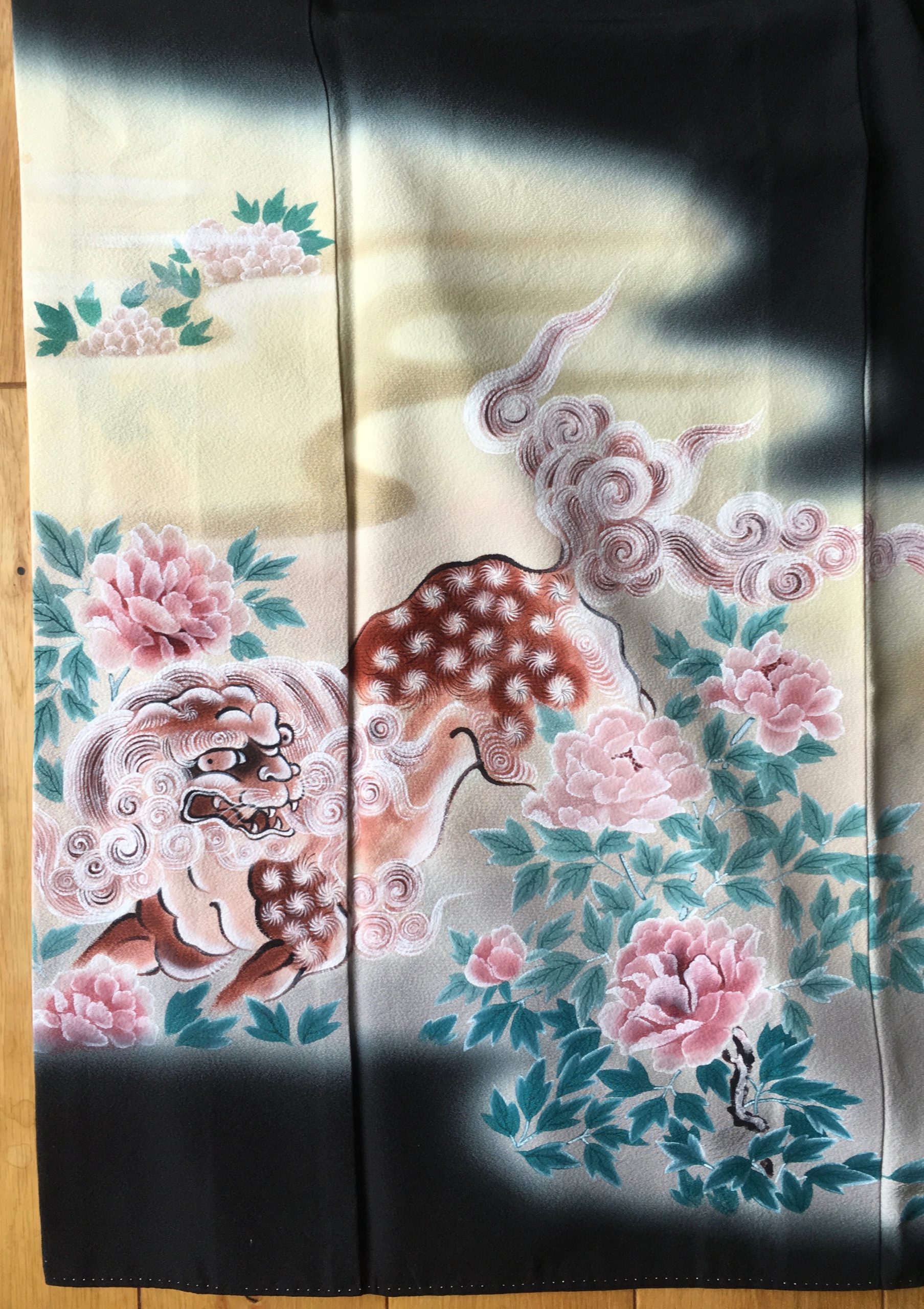Are Peony flowers the most frequently used motifs for kimono patterns?
Peony came from China in the 8th century, but it soon became a flower loved by nobles and a symbol of beauty and fortune.
Butterflies are said to be carnations of peony and there are many combinations with kimonos and obis.
The Pattern of fukuro obi as above is a combination of peacock and byobu(Japanese screen) with various flowers patterns in nobles houses .
The pattern of Fukuro Obi as above is red and pink peony with silver leaves pattern.
A shakuyaku is blooming in the garden now(above right pic).
Both shakuyaku and botan(above left pic) are “peony” in English, but shakuyaku is a perennial plant and botan is a tree. However, since ancient times, it has been loved by Japanese as the most colorful flower and has become an adjective of beauty.
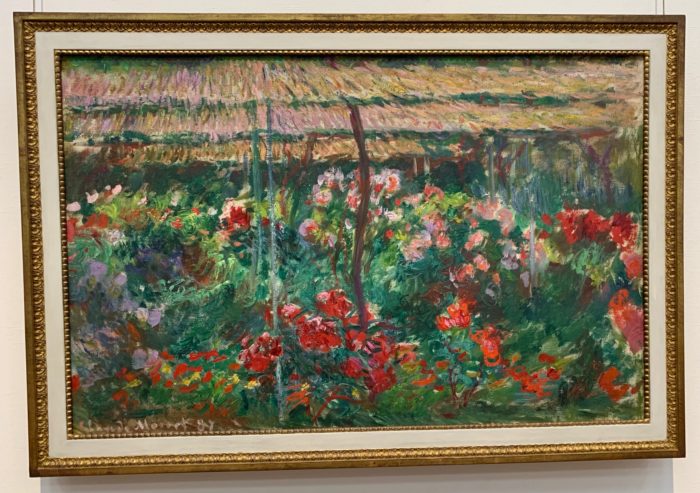
At the National Museum of Western Art in Ueno, Tokyo, there is a work by Monet depicting a shakuyaku garden(1887,above pic). 4 years before, he moved to a village in the northwest of Paris. Because it is Monet which got much inspiration from Japanese ukiyo-e, it would be a peony grown in his garden.
In the Ueno Park, there is the Tokyo National Museum where you can admire huge collections of Japan and Asia. Since the furisode of the photo is in the 18th century, it is faded, but at that time it was probably full of colorful botan.

I think the main part of the fukuro obi as below is a combination of two butterflies.
The background of my idea is the iconographic image that has appeared.

There are a series of ukiyoe with flowers, birds and insects by Hokusai, the most famous ukiyoe painter overseas. One of them is a masterpiece depicting the peony and butterflies(as below).
This motif was popular in Chinese paintings. The peony was a symbol of wealthy noble, and the butterfly was a symbol of longevity.
In Japan, the culture that can interpret this meaning is the premise of the ukiyoe of Hokusai.

Peony is a popular motif, so there are many patterns combined with various motifs.A combination with a Chinese lion is said to be “karazishi-botan” and is also popular as a tattoo pattern.Please look at the black tomesode kimono as formal dress(below pics)
The lion is said to be the king reigns over the beast. Even he fears pests that occur in his body’s hair and propagate, eventually breaking the skin and feeding meat.However, this pest will die when dew dripping from the peony flower hits it at night. So at night, the lion rests under the peony flower. There is a place of peace for Lion.It is asking,”For you, where do you live in safely?” in Buddism.
However, in the late Edo period, the lion turned into a symbol of only wild beasts. In particular, with the trend of tattooing with the development of ukiyoe, firemen, craftsmen, and gang sometimes sculpted the patterns.In modern times, it became mainly the customs of yakuza.
Nowadays, there are more Japanese people who associate “tattoo → yakuza”, so they began to be avoided as kimono and obi designs.
